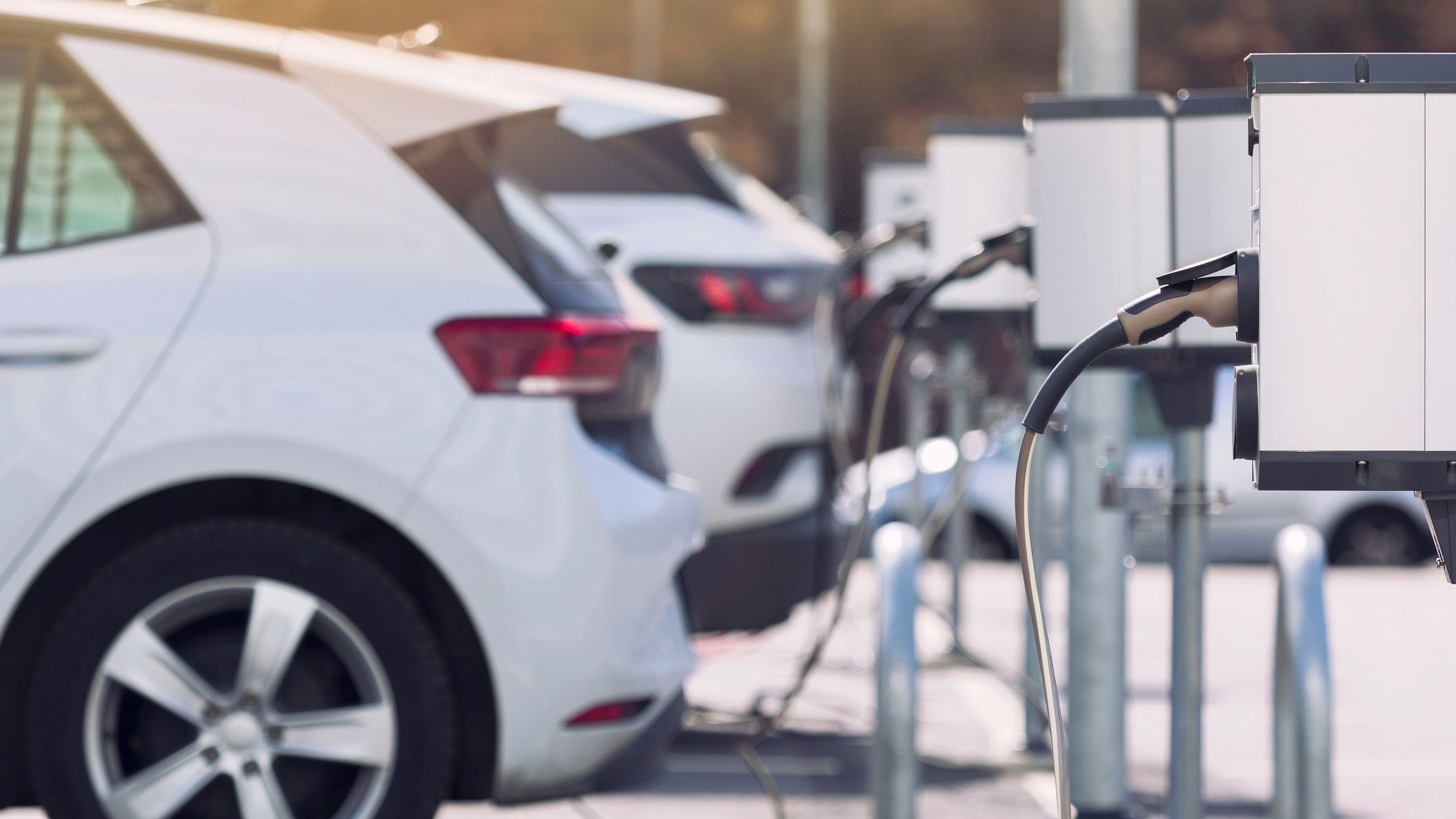
Representative image showing EVs.
Credit: iStock Photo
With booming electric vehicle usage in India, the number of EV charging stations is expected to reach the 1 lakh mark by the end of the decade, as per industry experts, compared with 16,271 now. However, while growth isn’t an immediate problem, standardisation of various charging points is.
Of the current number, 5,059 are in Karnataka, making it the state with the largest number of charging stations. It is followed by Maharashtra (3,079), Delhi (1,886), Kerala (958), Tamil Nadu (643), Uttar Pradesh (583) and Rajasthan (500).
The growth in infrastructure is expected to be propelled mostly by private charge point operators, which already own a bulk of the current infrastructure. A case in point is Ola Electric, which earlier this month promised the addition of 10,000 more fast charging stations by the end of the quarter, while direct competitor Ather Energy is planning to expand its own network to 2,500 by March.
Tech-enabled fleet operators, which are two and three wheeler heavy, are currently the top adopters of electric vehicles and public charging infrastructure. This is expected to continue going forward, even as the market shifts from favouring slow to fast charging apparatus, according to Akhil Jayprakash, co-founder of EV charger aggregator Pulse Energy.
He revealed that the number of transactions the company has processed for EV charging grew 100 times in the past year, pointing to a clear and continued increase in adoption.
Challenges to penetration persist
The issue of interoperability between chargers remains a question. “The market will have to find a standard, when it comes to fast charging two and three wheelers. There will be an Ather and Ola connector battle, but ultimately the network infrastructure will grow, whether people build connectors to adapt to an Ather or Ola charger, that is up to the market,” Jayaprakash said, adding that both connectors are open source and it will be up to vehicle manufacturers to adopt either.
The recently approved Light Electric Combined Charging System (LECCS), India’s first-ever indigenously developed AC and DC Combined Charging connector standard for light electric vehicles, has brought relief, and the government is pushing operators to adopt standardisation, but public entities will have to step up, experts believe, even as a public private partnership model hasn’t materialised well.
“Challenges such as attracting private partners, ensuring fair competition, and establishing equitable access to charging infrastructure persist,” said Niranjan Nayak, managing director, Delta Electronics India.
“Along with budgetary constraints, public entities lack the specialised knowledge required to operate and maintain complex charging networks, leading to a hesitation in deployment. The evolving nature of EV technology and charging infrastructure can also deter those who may be risk-averse to investing in large-scale deployments,” he added.
Retail lags adoption
While fleet operators have been quick to adopt electric mobility, retail uptake continues to lag behind, especially for four wheelers. This is due to a number of factors that are unlikely to change soon, including a high upfront cost of electric vehicles and range anxiety due to a lack of infrastructure.
“EV charging for retail vehicles is social service,” said Magenta Mobility chief executive officer Maxson Lewis. This is because retail users prefer charging their vehicles at home, which proves to be cheaper, and their utilisation of public infrastructure remains low, leading to operators focusing on commercial users, he added.
Another deterrent to retail adoption is the urban dense nature of the current charging infrastructure. Bengaluru, for example, houses 85% of the chargers in Karnataka, while presence on highways and smaller towns and cities remains low.
Both these factors combined deter EV adoption for personal mobility, as they can't be relied upon as a primary vehicle or be used for long-distance travel.
“Further expansion with a focus on rural areas, improved reliability, and user-friendly experiences are crucial to building trust and accelerating EV adoption,” Nayak said.
(In part two, we will explore how EV makers are planning to bring parity between electric and internal combustion engine vehicles by 2027-28)